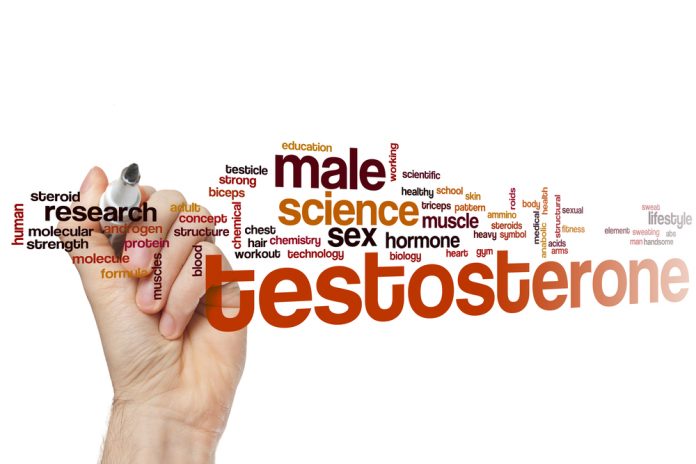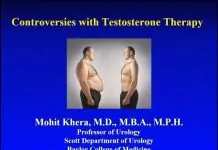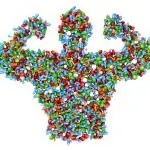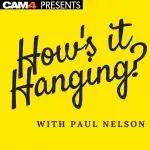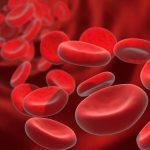Millions of men in the U.S. rely on prescription testosterone to restore optimal levels of this critical hormone. The benefits of testosterone replacement therapy (TRT) for low-T include (1):
- Feeling more alert
- Having higher energy levels
- Better cognitive functions
- Heightened sexual performance by improving the quality and duration of erections
Let’s look at what the latest research says about:
- the potential health impacts for hypogonadal (testosterone deficient) men of taking or declining TRT,
- what men on TRT concerned about their lipid profile and the risk of CVD should know, and
- what effective, non-testosterone based treatment options are available to treat the symptoms of low-T.
Use of Non-testosterone Based Therapies Increasing
The number of men using TRT and non-testosterone based treatment options for hypogonadism has steadily increased over the last 10 years, and concerns about the FDA warnings about the possible health impacts of supplemental testosterone has seen non-testosterone treatment options becoming ever more popular.
One study (2) found that while prescriptions for TRT more than doubled (541,033 to 1,113,646) from 2009-2012, the number of men prescribed TRT declined by almost one third between 2012-2015.
Researchers used data on 852,079 patients from 2009 to 2015 to identify men using testosterone and non-testosterone based hormone therapies like clomiphene citrate, aromatase inhibitors, human chorionic gonadotropin (hCG), and follicle stimulating hormone (FSH) to discover trends in treatment preferences for low-T men.
However, there is evidence that alternatives like clomiphene citrate aren’t as effective as TRT to treat the symptoms of low-T (3), although another study finds it as effective as TRT for maintaining male fertility (4), and recent research suggests that hCG could be as effective as TRT(5) for hypogonadism.
These findings suggest that Food and Drug Administration warnings about the safety of TRT have caused a swing to alternative treatment options, but how valid are the FDA’s claims about testosterone?
Study Suggests No Risk of Heart Disease with TRT
While there have been safety concerns raised about testosterone therapy, for example, the FDA said in 2016 that it would step up warnings about testosterone (and other steroid drugs), claiming that they can cause heart attacks, personality changes, and infertility.
But, groundbreaking research published in 2017 (6) may change the way we look at TRT, researchers found that:
- In the FDA’s assessment of cardiovascular (CV) risks from testosterone therapy, they only identified four studies that suggested increased heart risk, but none of the studies offered valid evidence to support that claim.
- More than 100 studies reported a reduced CV risk, improvement of known CV risk factors in men with higher T levels.
Reduced mortality in hypogonadal men who received TRT versus men with low-T who did not.
Furthermore, a study from Intermountain Medical Center (7) finds that TRT has a beneficial effect on cardiovascular health in older hypogonadal men with a history of heart disease.
This study found that patients receiving TRT reduced their risks of major adverse cardiovascular events; including strokes, heart attacks, and all causes of death. Even more surprising, the findings suggest that men who received testosterone as part of their follow-up treatment did much better than patients who did not. The patients not receiving TRT were about 80 percent more likely to suffer an adverse cardiovascular event like heart attack or stroke (7).
According to cardiologist Brent Muhlestein, MD, co-director of cardiovascular research at the Intermountain Medical Center Heart Institute (7) “The study shows that using testosterone replacement therapy to increase testosterone to normal levels in androgen-deficient men doesn’t increase their risk of a serious heart attack or stroke.” He also stated that “That was the case even in the highest-risk men, those with known pre-existing heart disease.”
Erectile Function with and without TRT
Research published in Nature Reviews Urology (8) finds strong evidence that testosterone has a relevant role in treating all three causes of ED; physical illness, reaction to stress, and relationship issues.
Additionally, a 2018 study published in The Journal of Urology (9), compared the progression of erectile dysfunction in middle-aged men who were given TRT and men of the same age range who did not receive testosterone (the control group) over a period of 10 years. The majority of participants in both groups were overweight and had high blood pressure, diabetes or both (9).
The men treated with testosterone not only experienced significantly improved erectile function but also reduced their body weight by 20 percent on average (9). Conversely, after 10 years the hypogonadal men who did not receive TRT increased bodyweight from between two to five percent from when the study began, while also experiencing a deterioration in erectile function over the same period(9). Researchers concluded that testosterone therapy is an effective treatment for ED in hypogonadal men and may help reduce bodyweight to healthier levels.
Testosterone and Prostate Inflammation (Prostatitis)
Prostatitis is a term used to describe a broad variety of disorders that range from acute bacterial infections to chronic pain experienced in the prostate. The symptoms can include difficulty urinating, painful ejaculation, and even low-back pain (10).
Prostatitis can be a common concern among men seeking treatment for low-T. But, research published in 2018 (11) suggests that TRT may be beneficial, rather than harmful to prostate health.
According to the study, it was the prostates of patients experiencing hypogonadism that showed significantly increased, chronic inflammation within existing prostate cancer tumors and nearby, benign prostate tissue (when compared to men with normal testosterone levels).
Furthermore, this was the case regardless of any other clinical factors associated with prostate inflammation. This research suggests that it’s the lack of testosterone that can exacerbate prostate inflammation, rather than receiving TRT to bring testosterone up to optimal levels.
Benefits of TRT for Classic and Functional Hypogonadism
Male hypogonadism is typically divided into two types; classical hypogonadism, where low levels of testosterone are caused by a specific underlying medical condition, like Klinefelter’s syndrome, Kallmann’s syndrome or a pituitary tumor. Functional or late-onset hypogonadism is when the decline in testosterone is associated with the effects of aging or age-related conditions like obesity and type two diabetes (12).
Age-related (also called late-onset) hypogonadism is estimated to affect approximately two percent of men 40 years of age and over (12).
A study published in The Journal of Urology (13) discovered major new evidence regarding the effects and safety of testosterone therapy in different groups of low-T men.
650 hypogonadal men, ranging from early to later middle-age, were studied over a nine-year period to discover what, if any, differences there were in how patients with either functional or classic hypogonadism responded to TRT.
While both groups showed significant improvements in cardiovascular health, the study findings strongly suggest that patients experiencing functional hypogonadism may reap even greater cardiovascular benefits from TRT. This fact is possible because the functionally hypogonadal patients expressed worse cardiovascular risk factors at the start of the study, compared to men with classic (age-related) hypogonadism (13).
Importance of Adjusting Testosterone Dosage to the Individual
There can be significant differences in how men treated for low-T to resolve ED respond to similar doses of testosterone. Recent research suggests that peak and trough testosterone levels can vary widely in individuals receiving TRT (14).
Researchers studied 478 men who either received similar doses of testosterone by intramuscular injection (1000 mg for 12 weeks), or opted against TRT (232 men in this group). They adjusted for age, weight, waist size, blood pressure, fasting glucose, lipids, and self-reported quality of life to account for the baseline differences between each group.
The patients receiving the same testosterone dose each showed a broad mean variation in both peak (23 percent) and trough (17.5 percent) testosterone levels. Also, 25 percent of patients had a maximum peak T level change of over 50 percent and maximum trough testosterone change over 35 percent. The findings indicate that maintaining optimal testosterone levels may be best accomplished by clinicians who are aware of this variability between individuals when deciding on dose adjustments (14).
Toremifene Citrate Improves HDL
A big concern for men relying on TRT to treat ED due to hypogonadism is what effect it may have on their lipid profile since decreases in high-density lipoprotein (HDL) levels have been seen in patients on TRT (15). This fact can be particularly worrying for some patients.
While niacin (taken along with krill oil) is commonly used to treat low HDL levels, the side effects (burning, tingling, and itching in the skin) often lead to patients discontinuing its use.
However, researchers have discovered that toremifene (sold as Fareston) can improve the lipid HDL in men experiencing low HDL on TRT in a similar way as niacin and krill oil (16). The findings suggest that not only is toremifene as effective as niacin and krill oil, but it’s also much better tolerated by patients.
The study included 75 men with low HDL levels receiving TRT. 34 were treated with toremifene, 17 received niacin and krill oil, and 24 were untreated.
Researchers found that while the untreated men demonstrated no change in their lipid profiles, there was no significant difference between the effectiveness of toremifene or niacin with krill oil in improving the lipid profile of the patients receiving either treatment option. But, according to the study authors, more research is needed to validate if toremifene could serve as a viable alternative to niacin for low HDL in men on TRT (16).
Does all TRT Negatively Impact Lipids?
One reason given for testosterone treatment adversely affecting cardiovascular risk is that it lowers high-density lipoprotein (HDL) cholesterol concentration (15). However, that effect is only observed when TRT raises testosterone levels above normal levels, (such as when androgens are abused for bodybuilding) (17). Otherwise, testosterone hasn’t been shown to cause any significant change in HDL concentrations. Essentially, current research shows that using TRT to restore testosterone to normal levels, comes with no appreciable, negative impact on HDL (17).
CLICK HERE TO BUY AN AFFORDABLE TESTOSTERONE TEST- NO DOCTOR VISIT
Footnotes
1) Hackett G. An update on the role of testosterone replacement therapy in the management of hypogonadism. Therapeutic Advances in Urology. 2016;8(2):147-160. doi:10.1177/1756287215617648.
2)USE OF NON-TESTOSTERONE BASED HORMONE THERAPIES AMONG PRIVATELY INSURED U.S. MEN, Henry, MarkNangia, AjayMehta, Akanksha et al.The Journal of Urology. 2009-2015. Volume 199, Issue 4, e1096.
3) Pranav Dadhich, et al. Testosterone versus clomiphene citrate in managing symptoms of hypogonadism in men. Indian Journal of Urology. 2017.
4) Katz DJ, et al. Outcomes of clomiphene citrate treatment in young hypogonadal men. BJU International. 2012.
5) Ravi Kacker, MD, et al. Human Chorionic Gonadotropin is Effective as Monotherapy for Men With Symptomatic Testosterone Deficiency (Hypogonadism). New England Section of the American Urological Association. 2014.
6) Travis Goodale, et al. Testosterone and the Heart. Methodist Debakey Cardiovascular Journal. 2017.
7) Intermountain Medical Center. Testosterone supplementation reduces heart attack risk in men with heart disease. 2016.
8) Giovanni Corona, Mario Maggi. The role of testosterone in erectile dysfunction. Nature Reviews Urology. Nature Publishing Group. 2009.
9) ERECTILE FUNCTION IN 478 HYPOGONADAL MEN WITH MODERATE TO SEVERE ED WITH AND WITHOUT TESTOSTERONE THERAPY FOR UP TO 10 YEARS. Haider, AhmadDoros, Gheorghe et al.The Journal of Urology , Volume 199 , Issue 4 , e1174.
10) Krieger JN, Lee SWH, Jeon J, Cheah PY, Liong ML, Riley DE. Epidemiology of prostatitis. International journal of antimicrobial agents. 2008;31(Suppl 1):S85-S90. doi:10.1016/j.ijantimicag.2007.08.028.
11) Gabrielson, Andrew & Reddy, Amit & Sholl, Andrew & Alzweri, Laith & Abdel-Mageed, Asim & Silberstein, Jonathan & Hellstrom, Wayne. (2018). PD62-05 BRIDGING THE GAP BETWEEN LOW TESTOSTERONE AND PROSTATE INFLAMMATION IN HYPOGONADAL MEN. The Journal of Urology. 199. e1158. 10.1016/j.juro.2018.02.2841.
12) Asif Muneer. Hypogonadism: an underdiagnosed condition. https://onlinelibrary.wiley.com/doi/pdf/10.1002/tre.140
13) Michael Zitzmann, Eberhard Nieschlag, et al. TESTOSTERONE TREATMENT IN MEN WITH CLASSICAL VS FUNCTIONAL HYPOGONADISM: RESULTS FROM A 9-YEAR-REGISTRY. The Journal of Urology, Volume 199, Issue 4, Supplement, April 2018, Pages e1174-e1175.
14) Nascimento, Bruno & L Bernie, Helen & Schofield, Elizabeth & P. Mulhall, John. (2018). MP85-14 VARIANCE IN PEAK AND TROUGH TESTOSTERONE LEVELS IN MEN USING INTRAMUSCULAR TESTOSTERONE. The Journal of Urology. 199. e1174. 10.1016/j.juro.2018.02.2874.
15) Katya B Rubinow; Stephanie T Page. Testosterone, HDL, and Cardiovascular Risk in Men. Medscape. 2018. https://www.medscape.com/viewarticle/770544
16) Daniel J.Mazur,Taylor P.Kohn. et al. TOREMIFENE CITRATE IMPROVES HIGH-DENSITY LIPOPROTEIN LEVELS IN MEN ON TESTOSTERONE REPLACEMENT THERAPY. The Journal of Urology,V olume 199, Issue 4, Supplement, April 2018, Page e1171.
17) Hans SS, Dhindsa SS, Chemitiganti R. Testosterone Replacement and Cardiovascular Safety: No Straight and Narrow! Clinical Medicine Insights Cardiology. 2015;9:33-37. doi:10.4137/CMC.S23395.


